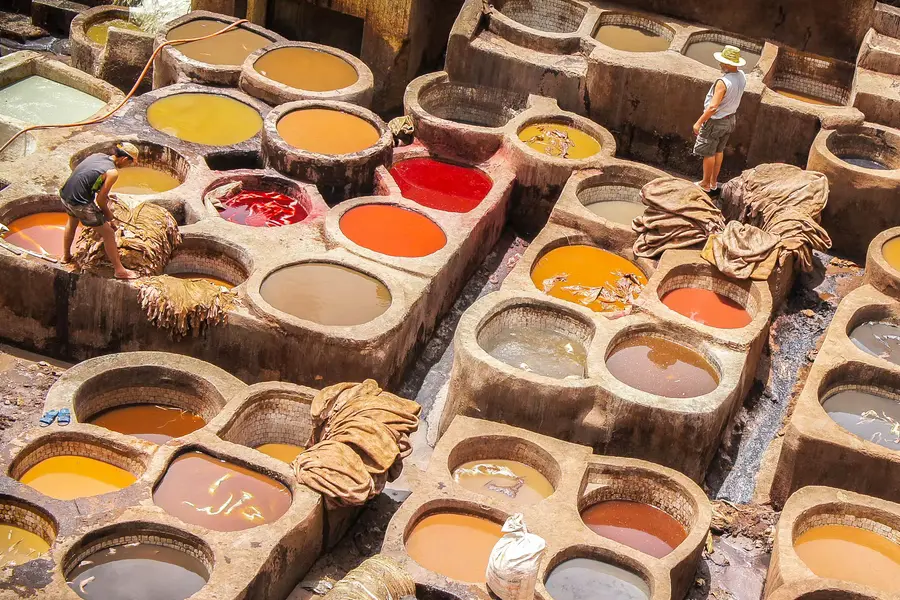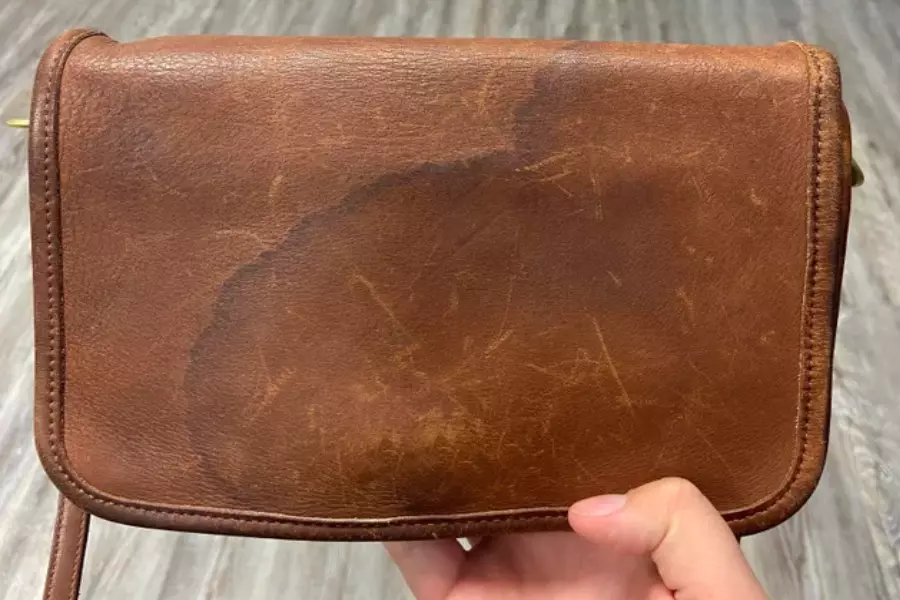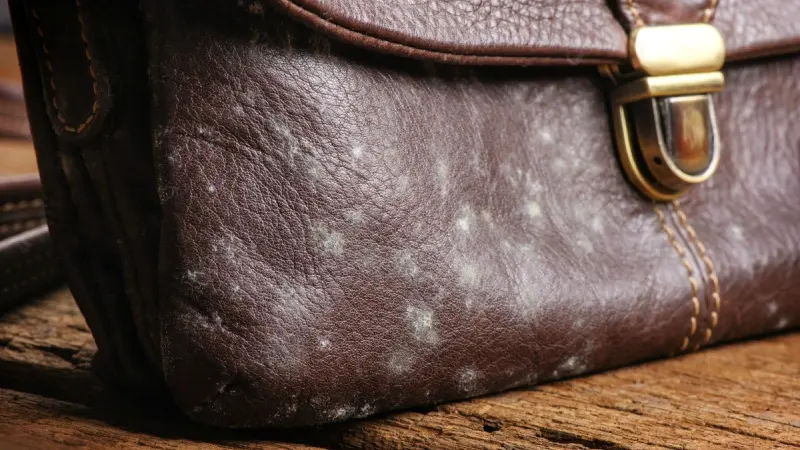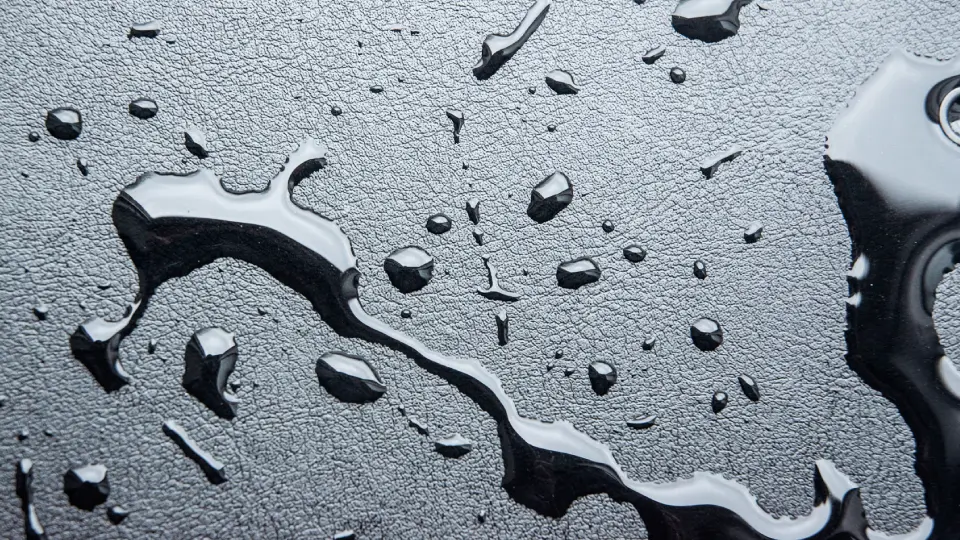What Happens When Leather Gets Wet? A Guide On Water-Damaged Leather
In many of our articles, you will notice a consistent and recurring theme. We have referenced the concept of leather getting damaged due to prolonged and consistent water damage. We have even written an article highlighting the best practices of tending to and treating leather that has sustained water damage.
As we have received many inquiries on this front, we would like to share our knowledge of how water damages leather and the common effects and outcomes of water-based damage on leather. These can include damage on both a cosmetic as well as structural level.
In short, the most commonly observed effects when leather gets wet include:
- Increased Brittleness of Leather
- Peeling of Leather
- Visual Staining of Leather
- Misshapen Leather Articles
- Mold and Mildew Formation
- Rotting Leather
In this article, we’ll be taking a closer look at how water interacts with leather and also what happens to the leather after it gets wet.
How Does Water Interact With Leather?
The first thing you should take note of is that water does not interact with leather on a chemical level. However, that is not to say that the properties of your leather article are unchangeable with prolonged or consistent water exposure.
In short, water can permeate the leather’s surface, drawing out natural oils within the material, leading to undesirable effects. We will cover more of that later in the article. To fully understand the previous statement, we must first have a cursory understanding of what leather is and how it is made.
Leather Properties Relating To Water Exposure
Leather essentially originates from the skin and hides of animals. As a result, leather can be considered a material that has an element of breathability. This is due to the porous nature of animal skins commonly used in the leather making; largely due to hair follicle pores.
This means that water on leather likely doesn’t fully stay on leather. It can seep in beyond the surface, leading to undesirable effects down the line. Like humans, animals also produce sebum, which is an oily and waxy substance.
The main function of sebum is to coat, protect and moisturize the skin. Prolonged water exposure can lead to the natural sebum found within leather dissipating at a much quicker rate than we would otherwise expect.
Leather Manufacturing Practices Relating To Water Exposure
While leather is lauded for its luxurious and intrinsically attractive look and feel, it would hardly be a practical or viable material for choice if it was overly fragile.
Manufacturing processes can look to mitigate and prevent water-based damage but as with most things in life, the preventive measures that manufacturers take are not all-encompassing and their effects are not everlasting.
These preventive measures usually happen during the post-tanning and finishing steps of the leather manufacturing cycle. It is not uncommon for leather to get applications of oil, grease, and even chemical coatings.

Among other things, these steps can help to increase a leather’s resistance and resilience against superficial water exposure. Therefore, it’s worth noting that for well-manufactured leather goods, water damage is very rarely observed if the following two conditions are met
- The product is new and recently manufactured and the protective coatings are intact
- The protective coatings are not deprecated due to prolonged or excessive water exposure
This is why we very rarely recommend soaking any leather product you own in the water. If you do, you must be willing to accept any tradeoffs that might occur while still making the best effort to mitigate any negative effect and impact as quickly as possible.
Effects of Water on Leather
When leather gets wet, it becomes brittle, starts to peel, can lead to visual stains, may start to misshape, promote mold and mildew formation, and even start to rot. Let’s take a closer look at all of these effects in detail.
Effect 1: Increased Brittleness of Leather
As previously mentioned, a piece of leather that loses its natural oils will be naturally more brittle. The internal oils act as a lubricant, allowing for the leather to be bendable as well as supple to the touch.
The presence and exposure of water can lead to evaporation and drainage (via osmosis) of the internal oils. In absence of the lubricating agent, there will be greater friction among and between the fibers of the leather when the leather moves.
The fibers rub against each other and there is also greater potential for wear and tear down the line. In extreme circumstances, cracking on leather surfaces can be observed as well.
Effect 2: Peeling of Leather
The effects of peeling from water damage are most commonly associated with goods that are made of bonded leather. In short, bonded leather is made by combining leather scraps, sometimes even with fake leather.
In this instance, the different pieces of leather being mixed are usually held together by adhesives. If water reaches the adhesives holding the scraps together, the strength of the adhesive will invariably weaken over time.
Eventually, scraps of leather come apart due to inadequate bonding effects, giving rise to the appearance of peeling. When it comes down to ‘higher quality’ leather such as top or full-grain leather, we should not realistically expect to see peeling occurring from water damage exclusively.
However, exposure to water can make full and top grain leather more susceptible to being damaged from external sources of trauma, giving rise to the visual effect of peeling.
On the same note, bonded leather that is water damaged is also likelier to experience tearing. It usually isn’t a leather fabric that is being torn, but rather a bond between mixed materials that comes apart.
Effect 3: Visual Staining
Depending on how leather is treated during the manufacturing process, the likelihood of staining through water exposure can vary radically. Aniline leather in particular has a high tendency to stain.
Aniline leather is only dyed and not surface treated after the fact. This is because aniline leather is meant to look as natural as possible, and surface finishing might mitigate that cosmetic intention.
On the other hand, chrome-tanned leather tends to be the most resistant to visual staining from water exposure due to the protective nature of its coating. Vegetable-tanned leather tends to sit in between chrome tanned leather as well as aniline leather in its tendency for staining to occur.

Excessive water exposure can also loosen color dyes that might have been applied on a leather surface. If the layer of dye reduces, a couple of things might happen. The dye can pull in towards the area of leather that is wet, resulting in a higher dye concentration in the area of leather that was wet. This would result in a darkening effect.
On the flip side, the dye can also dissipate away from a wet area, resulting in a lower dye concentration, resulting in a lighter color effect in the area in question. It is not always a given that water exposure will result in a uniform and consistent effect across different leather types and surfaces with different dye types and properties.
Effect 4: Misshapen Leather Articles
We have many articles detailing how you might be able to stretch and conform different types of leather articles to a form factor that you would want. A common way that you would be able to would be to introduce water into the equation.
This is doubly true when the water is warmer. Leather that comes into contact with warm water tends to be more malleable. While it is in this state, you can look to bend, stretch and mold the leather into forms that it might not naturally assume.
Upon drying, there will be a high chance that your leather article will stay in the general shape you have molded it to. While this can be advantageous if this process is done deliberately, it is also potentially an undesirable effect if you are not looking to re-shape your leather article.
Take special care when handling wet leather articles and do not let them dry in other–than-natural shapes if you do not want your leather article to end up with a different shape.
Effect 5: Mold and Mildew Formation On Leather
While mold and mildew tend to be used quite interchangeably, they are distinct. Mildew onsets are much more common and likely to happen if you do not take the proper care.
Have you ever left a laundry load in the washing machine for a full day without airing it? If you have, chances are your clothes would have a funky and unpleasant smell.
This is not because your soap or detergent didn’t work the way they were intended to. This is instead likely because mildew formation happened with your clothes being in a wet, unventilated environment across an elongated period.

Leather is not dissimilar in this nature. If you do not take the proper steps to protect, dry, and store your leather adequately after it gets wet, you are increasing the chances of mildew growing on your leather article.
In more extreme circumstances, mold can also form, which tends to be much harder to treat compared to mildew. We will look at simple ways in which we can identify whether it is indeed mold or mildew that is forming on your leather surface.
Either way, whether mold or mildew, we want to ideally ensure that we do not allow the formation of unwanted agents to happen but if they do, for us to act as quickly as possible in its treatment.
Mold
Mold tends to come in one of three colors; red, green, and black. Black mold in particular has a reputation of supposedly being more toxic and dangerous in general. However, there is scientific research showing that unless ingested, black mold should not be any more dangerous than any of its other color variants. Mold also tends to be fuzzier in its texture as opposed to mildew.
Mildew
Mildew tends to have lighter shades of colors as compared to mold. Especially in its initial onset, it would not be uncommon to find mildew looking like white and gray stains on your leather surface. Over time if untreated, the mildew can grow to an unpleasant brown color. The texture of mildew tends to be more powdery and spotty compared to Mold.
Effect 6: Rotting Leather
Truthfully speaking, we do not necessarily agree that leather rots are an isolated and distinct damage symptom compared to the other effects we had previously highlighted. However, this verbiage is common among leather owners and we thought to address the ‘rotting’ of leather on its own.
Generally, people categorize the rotting of leather into two categories; dry rot and a generic rotting. Dry rotting is usually the most extreme version of the first two symptoms we had addressed; increased brittleness and peeling.
If you have a leather article that is falling apart in your hands, you can understand why this might be referred to as a rotting piece of leather. However, we must distinguish the rotting as described compared to the rotting of fruit as an example.
The rotting of fruit usually happens due to intrinsic decay rather than a structural weakening, the latter of which happens for leather articles that ‘dry rot’. Another common way people have described the rotting of leather is when it is overcome by mold or mildew.
In this case, the process is a lot more akin to the rotting of the fruit. Microorganisms can grow and thrive in wet conditions. Because leather is porous, the growth is not limited to the surface area of the leather.
Mold and mildew can grow within the pores of the leather and if the growth is unchecked, it can also structurally weaken it. Unsurprisingly, leather that finds itself in this condition is more likely than not to emit a foul and pungent smell, once again drawing simple analogies to a rotting perishable.

About Matthew
Co-Founder, Editor-in-Chief & Writer At Leatherskill
I’m a leather enthusiast turned artisan. Apart from crafting leather products, I’m passionate about writing in-depth guides and reviews on all things leather!

